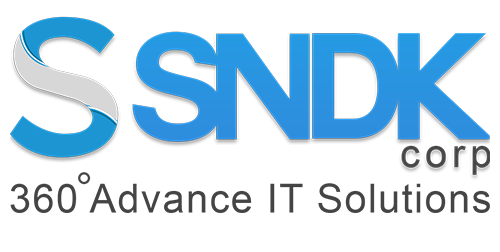Blog
How vSphere Is Redefining Infrastructure For Running Apps In the Multi-Cloud Era?
An immense population of recent companies relies on virtualization to improve their scalability more efficiently and cut hardware costs. VMware is guiding the way, working with business partners to reimagine industry computing to advance the demands of next-generation apps. With this blog, we will deep dive into what is vSphere and how vSphere Is Redefining Infrastructure for Running Apps in the Multi-Cloud Era. Let’s get started!
vSphere is the term for VMware’s server virtualization product. To understand vSphere also means knowing each of its features and how they run together. The features of vSphere are as follows:
- VMware ESXi: ESXi is a Type 1 hypervisor. It manages conceptualizing processors, storage, memory, and other references into various devices. The ESXi additionally holds a Virtual Machine File System that gives users a high-performance cluster file system for the virtual machines.
- vCenter Server: This was previously known as the Virtual Center. vCenter Server is a management device that acts as the control center or the core for data center services. It also gives the API for vSphere and maintains ESXi. Moreover, with vSphere 6.5, users can decide between Windows Server and vCSA. vCenter Server also provides Host Profiles, allowing users to establish rules for specific ESXi hosts.
- VMware vSphere Client: The vSphere Client is an HTML-based interface that gives users access to connect to vCenter remotely.
- VMware vSphere Distributed Switch: The distributed switch makes a virtual switch be attached to many hosts at once for optimal network administration.
- VMware Virtual SMP: With virtual SMPs, a single virtual machine can use more than one physical processor together.
- vMotion and Storage vMotion: Both allow live migration while virtual machines are working but, Storage vMotion enables users to migrate virtual disks or configuration files.
- vSphere High Availability: This role uses another available server to restart virtual machines that have crashed or failed.
- VMware vSphere Software Development Kits: These kits give users interfaces that present them access to certain parts of vSphere.
- VMware Distributed Resource Scheduler (DRS) and Storage DRS: These utilities assist in creating balance within vSphere. The conventional DRS manages computing capacity on the other hand Storage DRS works on storage capacity and I/O over datastore collections.
- Fault Tolerance: This creates duplicates of a selected workload on different servers to ensure that workload is continuously ready.
Now that you know the components of vSphere, next, we need to understand How vSphere Is Redefining Infrastructure for Running Apps in the Multi-Cloud Era.
Businesses trust vSphere to run optimized data centers globally. Multi-cloud has changed the way companies handle next-generation apps. A host of innovative new technologies are becoming feasible, from silicon-based accelerators to high-speed interconnects to cloud-scale architectures. Now an average business is running roughly 500 apps to drive their sales, and those apps are, shared across clouds. This multi-cloud approach improves app speed and innovation and enables organizations to be much more versatile. Nevertheless, a multi-cloud environment is very different, complicated, and distributed than anything companies have operated in the past. This complexity often forces trade-offs between moving fast and managing risk, resulting in slower performance while increasing expenses.
VMware Cross-Cloud Services for All Apps
VMware Cross-Cloud Services delivers three key advantages: quickened travel to the cloud, cost-efficient, flexible, and control across any cloud to help users navigate the multi-cloud era. VMware Cross-Cloud services extend the abilities of VMware’s product selection for a multi-cloud world and enable customers to choose the services needed on the desired cloud to meet emerging business requirements. VMware Cross-Cloud Services consists of five core building blocks:
- A state-of-the-art program for building and deploying cloud-native apps
- Cloud support for operating and running business apps
- Cloud administration for monitoring and controlling the performance and cost of apps across different clouds
- Safety and networking that traverses through whole multi-cloud services to connect and secure all apps and,
- A digital office to provide a shared workforce additionally with edge solutions to deploy and maintain edge-native apps.
Endnote
VMware helps in maintaining a productive and connected digital workforce by giving secure and stable access to all devices and apps while allowing IT to scale users on-demand. You also get the ability to build and deploy modern apps, from the data center to the cloud to the edge. With the help of the VMware vSphere client, you can use virtualization to modify your data centers into reduced cloud computing foundations, permitting you to achieve secure and adaptable services. Using ESXi, create and run virtual machines seamlessly. And with vCenter Server, you can handle and combine the support of multiple hosts. It allows you to maintain and control your physical and virtual infrastructure. It also serves as the primary administrator for ESXi hosts that are linked to a network. VMware plans to help users eliminate difficult decisions and challenges by providing them with a powerful combination of flexibility and control in their multi-cloud business.
